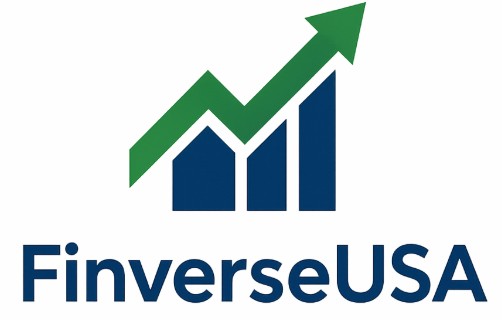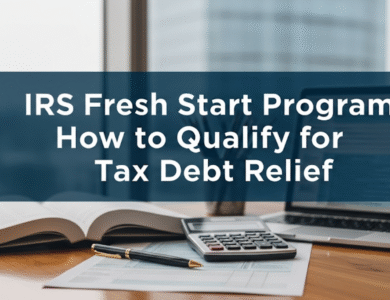
The days of relying solely on Social Security and traditional 401(k) plans for retirement are long gone. Today’s smart savers are turning to alternative retirement plans to build wealth and secure their financial future. These innovative strategies offer unique tax advantages, higher contribution limits, and flexible withdrawal options that traditional plans simply can’t match.
Whether you’re a business owner looking to attract top talent or an individual seeking better returns on your retirement savings, alternative retirement plans could be the game-changer you’ve been searching for. From supplemental executive retirement plans to self-directed IRAs, these options provide powerful tools for retirement planning that go far beyond conventional approaches.
What Makes Alternative Retirement Plans Different
Alternative retirement plans stand apart from traditional options in several key ways. Unlike standard 401(k) plans or IRAs, these specialized retirement vehicles offer unique features designed to meet specific needs and circumstances.
The main difference lies in flexibility and control. Traditional retirement plans often limit your investment choices to a predetermined menu of mutual funds. Alternative plans, however, allow you to invest in real estate, precious metals, private businesses, and other non-traditional assets. This diversification can potentially lead to higher returns and better protection against market volatility.
Key Features That Set Them Apart
Alternative retirement plans typically offer:
- Higher contribution limits than traditional plans
- More investment options including alternative assets
- Flexible withdrawal terms in certain situations
- Tax advantages tailored to specific circumstances
- Customizable features for different income levels
These plans often require more active management and understanding, but they reward investors with greater control over their financial destiny. For many people, especially high earners and business owners, the benefits far outweigh the added complexity.
Top Alternative Retirement Plan Options
Solo 401(k) Plans
Perfect for self-employed individuals and small business owners, Solo 401(k) plans allow you to contribute both as an employee and employer. This dual contribution structure can result in significantly higher annual savings compared to traditional IRAs.
For 2025, you can contribute up to $70,000 annually ($77,500 if you’re 50 or older). The plan works exceptionally well for consultants, freelancers, and independent contractors who want to maximize their retirement savings.
Self-Directed IRAs
Self-directed IRAs give you complete control over your investment choices. Instead of being limited to stocks and bonds, you can invest in:
- Real estate properties
- Private lending
- Precious metals
- Cryptocurrency
- Private equity deals
- Tax liens
This flexibility makes self-directed IRAs particularly attractive to investors who understand alternative assets and want to diversify beyond traditional markets.
Cash Balance Plans
These hybrid plans combine features of defined benefit and defined contribution plans. Cash balance plans are ideal for business owners with consistent, high income who want to contribute large amounts to retirement savings.
Annual contributions can range from $100,000 to over $300,000, depending on age and income. The plan guarantees a specific return rate, providing predictability that many business owners appreciate.
Supplemental Executive Retirement Plan Benefits
A supplemental executive retirement plan (SERP) represents one of the most powerful tools companies use to attract and retain top talent. These plans go beyond traditional retirement benefits, offering executives substantial additional retirement income.
How SERPs Work
SERPs function as employer-sponsored plans that provide benefits above and beyond what traditional qualified plans offer. They’re particularly valuable for executives whose high salaries exceed the contribution limits of standard 401(k) plans.
The typical SERP structure includes:
Benefit Formula: Usually based on final average salary and years of service Vesting Schedule: Often cliff vesting after 5-10 years of service
Payment Options: Lump sum or installment payments over time Tax Treatment: Deferred compensation taxed when benefits are received
Advantages for Executives
SERPs offer several compelling benefits:
- Income Replacement: Can provide 60-80% of pre-retirement income when combined with other retirement benefits
- Tax Deferral: Executives avoid current taxation on contributed amounts
- Retention Tool: Vesting schedules encourage long-term employment
- Flexibility: Plans can be customized to meet individual executive needs
For companies, SERPs serve as powerful recruitment and retention tools without requiring ERISA compliance or benefiting all employees equally.
Potential Drawbacks
However, SERPs do come with risks that executives should understand:
- Company Credit Risk: Benefits depend on the company’s ability to pay
- No ERISA Protection: Fewer legal protections compared to qualified plans
- Tax Changes: Future tax law changes could affect benefits
- Golden Handcuffs: May limit career mobility due to vesting requirements
Alternative Retirement Plan Calculator Features
An alternative retirement plan calculator helps you determine which retirement strategy best fits your situation. These sophisticated tools go beyond simple savings calculators to model complex scenarios and investment options.
Essential Calculator Components
The most effective alternative retirement plan calculators include:
Investment Option Modeling
- Traditional assets (stocks, bonds, mutual funds)
- Alternative investments (real estate, commodities, private equity)
- Risk-adjusted returns for different asset classes
- Correlation effects between asset types
Tax Scenario Analysis
- Current tax bracket implications
- Future tax rate projections
- Roth vs. traditional contribution comparisons
- Tax-loss harvesting opportunities
Cash Flow Projections
- Monthly and annual contribution limits
- Income replacement ratios
- Withdrawal strategies during retirement
- Social Security benefit integration
Using Calculators Effectively
To get accurate results from an alternative retirement plan calculator:
- Gather Complete Financial Information: Include all income sources, current savings, and expected expenses
- Input Realistic Assumptions: Use conservative growth rates and reasonable inflation estimates
- Model Multiple Scenarios: Test different contribution levels and retirement ages
- Consider Professional Guidance: Complex calculations may require expert interpretation
Many online calculators are available, but the most sophisticated versions often come through financial advisors or specialized retirement planning software.
Tax Advantages Comparison
| Plan Type | Tax Treatment | Contribution Limits (2025) | Key Benefits |
|---|---|---|---|
| Solo 401(k) | Tax-deferred or Roth | $70,000 ($77,500 age 50+) | High limits, loan options |
| Self-Directed IRA | Traditional or Roth | $7,000 ($8,000 age 50+) | Alternative investments |
| Cash Balance | Tax-deferred | $100,000+ | Guaranteed returns |
| SERP | Deferred compensation | No federal limits | Executive benefits |
Understanding the tax implications of each alternative retirement plan is crucial for making informed decisions. Traditional plans offer immediate tax deductions but require taxes on withdrawals. Roth versions provide tax-free growth and withdrawals but require upfront tax payments.
Choosing the Right Plan for Your Situation
Selecting the best alternative retirement plan depends on multiple factors including income level, employment status, risk tolerance, and retirement timeline. Here’s how to evaluate your options:
For Self-Employed Individuals
If you’re self-employed or own a small business, consider these priorities:
- Maximum contribution potential: Solo 401(k) plans typically offer the highest contribution limits
- Investment flexibility: Self-directed IRAs provide the most investment options
- Administrative burden: Some plans require more paperwork and ongoing management
- Business structure: Your business entity type may limit certain plan options
For High-Income Employees
High earners often bump up against traditional plan limits and should explore:
- Supplemental executive retirement plans if available through employers
- After-tax 401(k) contributions with in-service withdrawals
- Backdoor Roth IRA strategies to overcome income limits
- Taxable investment accounts for additional savings capacity
For comprehensive retirement planning strategies, Finverse USA offers personalized guidance on alternative retirement options.
For Business Owners
Business owners have unique opportunities and should consider:
- Cash balance plans for maximum contribution potential
- Defined benefit plans for predictable retirement income
- SERP arrangements for key employees
- Multiple plan combinations to optimize benefits across different employee groups
Implementation Steps and Best Practices
Successfully implementing an alternative retirement plan requires careful planning and execution. Follow these essential steps:
Step 1: Comprehensive Financial Assessment
Before selecting any plan, conduct a thorough review of your current financial situation:
- Calculate net worth including all assets and liabilities
- Analyze current retirement savings across all accounts
- Project future income and expense needs
- Assess risk tolerance and investment preferences
- Review existing insurance coverage and estate planning documents

Step 2: Professional Consultation
Alternative retirement plans can be complex, so consider working with qualified professionals:
- Fee-only financial advisors for objective planning advice
- Tax professionals to understand all tax implications
- Estate planning attorneys for integration with overall estate plans
- Plan administrators for ongoing management and compliance
Step 3: Plan Selection and Setup
Once you’ve chosen the right plan type:
- Research providers and compare fees, investment options, and service levels
- Complete all required paperwork accurately and thoroughly
- Establish investment allocations based on your risk tolerance and timeline
- Set up systematic contributions to maintain consistent savings discipline
- Create monitoring procedures to track performance and make adjustments
Step 4: Ongoing Management
Alternative retirement plans require active management:
- Review performance quarterly and rebalance as needed
- Adjust contributions when income or circumstances change
- Stay informed about regulation changes that might affect your plan
- Consider tax-loss harvesting opportunities in taxable accounts
- Update beneficiary information after major life events
Common Mistakes to Avoid
Even with the best intentions, investors often make costly mistakes with alternative retirement plans. Here are the most common pitfalls and how to avoid them:
Over-Concentration in Alternative Assets
While alternative investments can enhance returns, putting too much money in non-liquid or highly speculative assets can create problems. Maintain proper diversification across:
- Traditional stocks and bonds (60-70% of portfolio)
- Real estate investments (10-20% of portfolio)
- Commodities and precious metals (5-10% of portfolio)
- Speculative investments (5-10% maximum)
Ignoring Liquidity Needs
Some alternative investments tie up money for extended periods. Always maintain adequate liquidity for:
- Emergency expenses (6-12 months of living costs)
- Near-term goals and major purchases
- Required minimum distributions when applicable
- Unexpected opportunities or financial needs
Inadequate Due Diligence
Alternative investments often lack the transparency of publicly traded securities. Always:
- Research investment sponsors thoroughly
- Review all offering documents carefully
- Understand fee structures completely
- Verify regulatory compliance and registrations
- Seek independent professional opinions when uncertain
According to recent studies by the Employee Benefit Research Institute, proper diversification and professional guidance significantly improve retirement outcomes across all plan types.
Future Trends in Alternative Retirement Planning
The retirement planning landscape continues evolving, with several trends shaping the future of alternative retirement plans:
Technology Integration
Robo-advisors and artificial intelligence are making sophisticated retirement planning more accessible. These tools can:
- Automatically rebalance portfolios based on market conditions
- Provide real-time tax optimization recommendations
- Model complex scenarios with thousands of variables
- Offer personalized advice at lower costs than traditional advisors
Regulatory Changes
Recent legislation has expanded opportunities for alternative retirement planning:
- SECURE Act 2.0 increases contribution limits and expands access
- New IRA rules allow more alternative investment options
- State-sponsored plans provide alternatives for employees without employer plans
- Cryptocurrency regulations are clarifying digital asset investment rules
ESG Integration
Environmental, social, and governance (ESG) investing is becoming mainstream in retirement plans. Alternative plans increasingly offer:
- Sustainable investment options across asset classes
- Impact investing opportunities in private markets
- Green bonds and renewable energy projects
- Social impact measurements alongside financial returns
The National Association of Plan Advisors reports that over 40% of plan sponsors now consider ESG factors in their retirement plan investment selections.
Making Your Decision
Alternative retirement plans offer powerful tools for building wealth and securing your financial future, but they’re not right for everyone. The key is matching your specific situation, goals, and risk tolerance with the appropriate plan features.
Start by honestly assessing your current financial position and retirement goals. Consider working with qualified professionals who can help you navigate the complexities and make informed decisions. Remember that the best plan is one you’ll consistently contribute to and actively manage over time.
Whether you choose a supplemental executive retirement plan, use an alternative retirement plan calculator to model different scenarios, or implement a combination of strategies, the most important step is taking action. The earlier you start and the more consistently you save, the better your chances of achieving the retirement lifestyle you desire.
Don’t let complexity prevent you from exploring these powerful retirement planning tools. With proper guidance and a clear understanding of your options, alternative retirement plans can provide the financial security and flexibility that traditional approaches often lack. Your future self will thank you for the time and effort you invest in retirement planning today.

